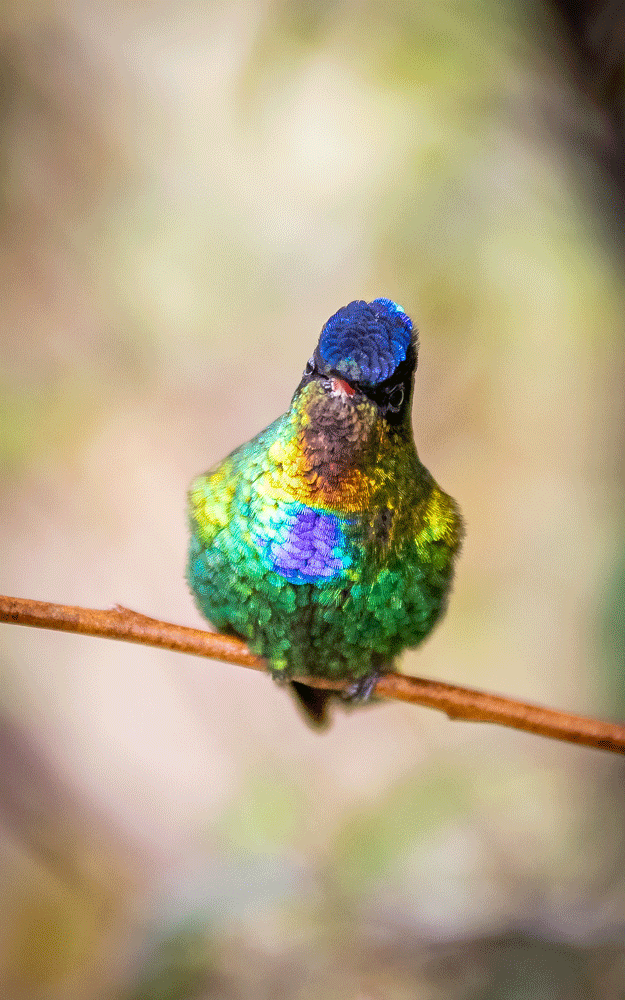
The feathers of birds contain some of the most beautiful and diverse colors that can be observed in nature, however, there is one group that stands out from all the others for the complexity of their colorful plumage, the hummingbirds.
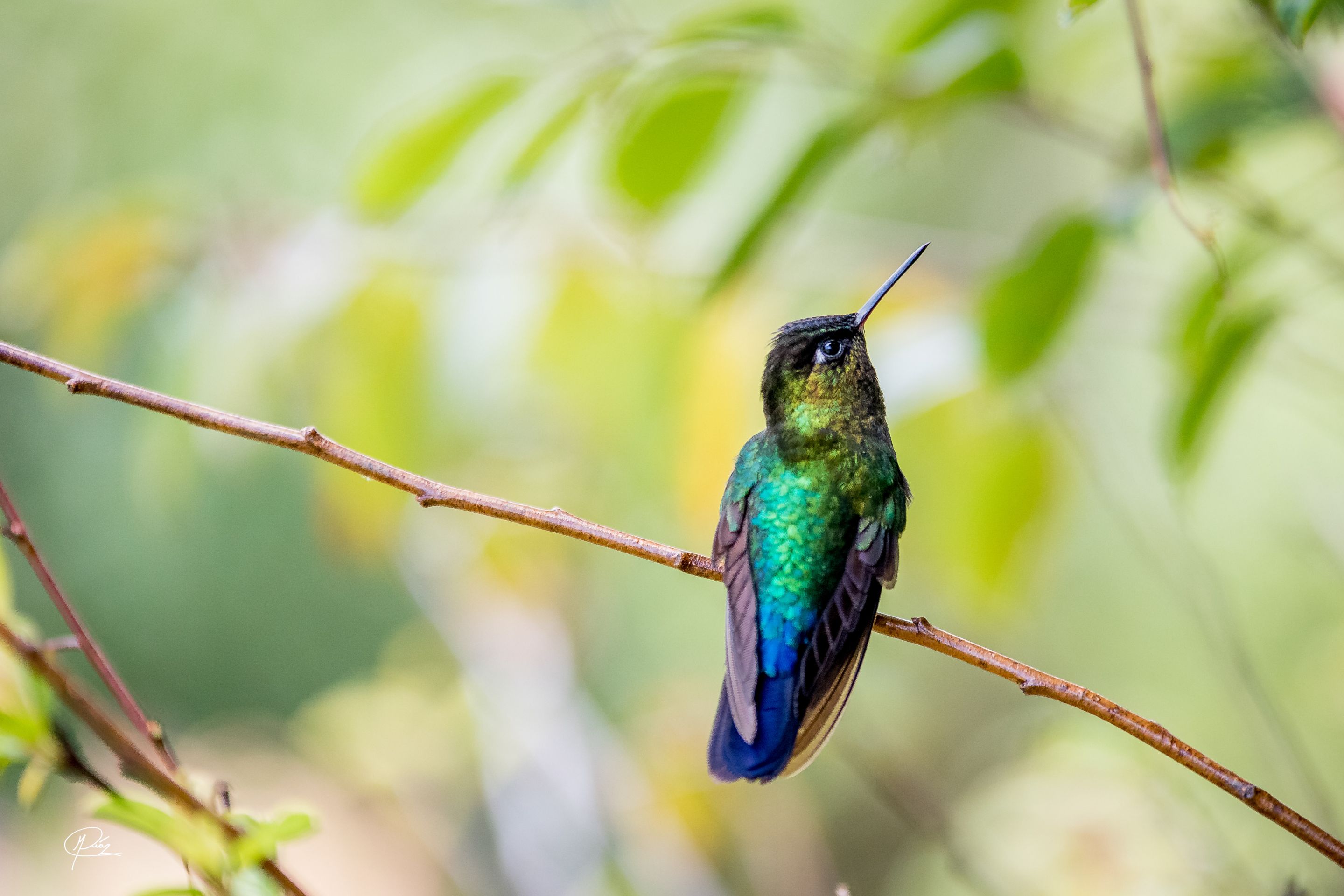
But what is the secret behind their feathers? What makes them the masters of color? the answer is a combination of two sciences, physics and chemistry (specifically biochemistry)
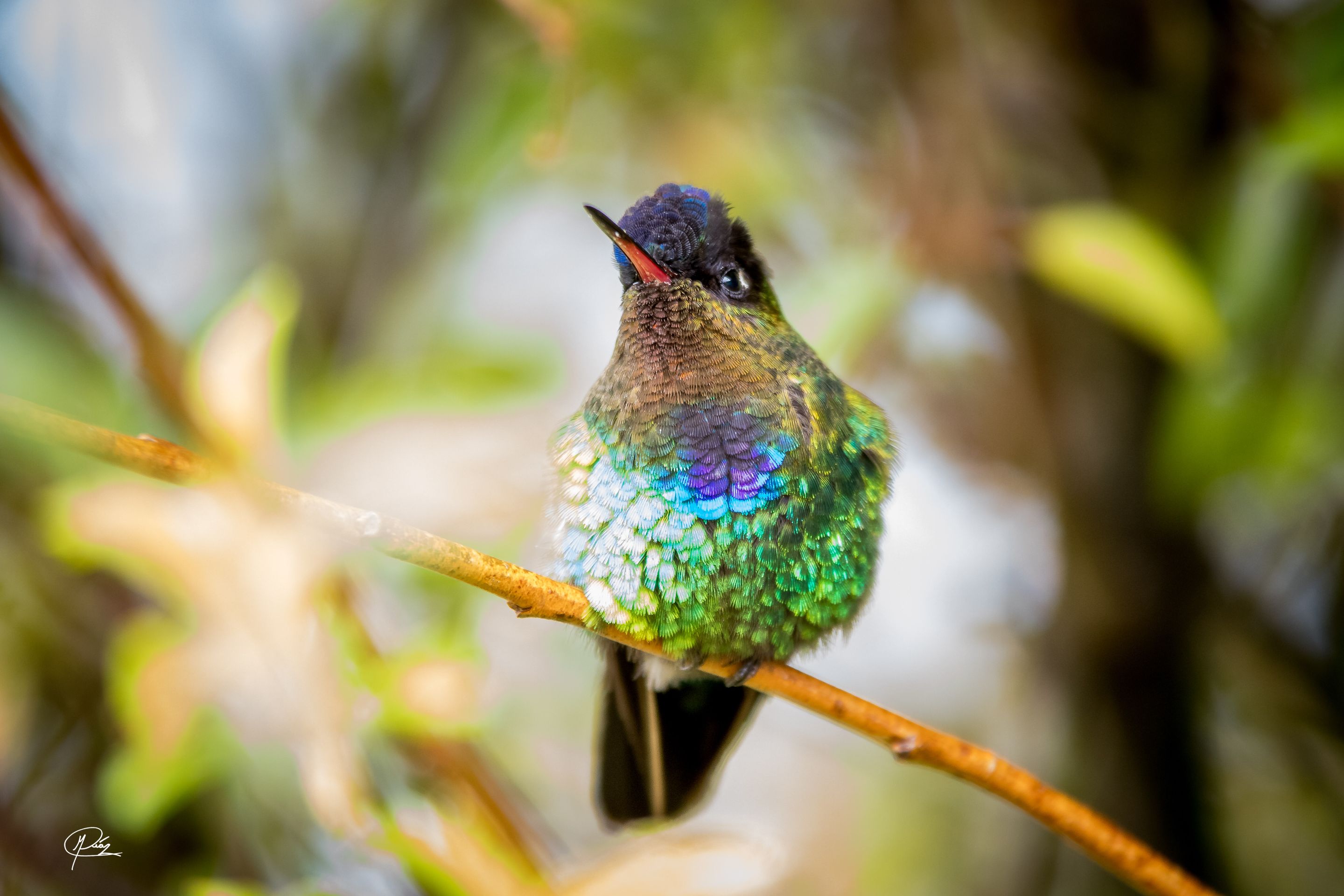
Bird feathers are made of keratin, the same substance that our nails and hair are made of. Inside the keratin, small structures called barbules are formed that are filled with cells called melanosomes, which produce pigments such as melanin, which is responsible for it. dark color of our hair and to protect ourselves from the sun's radiation.
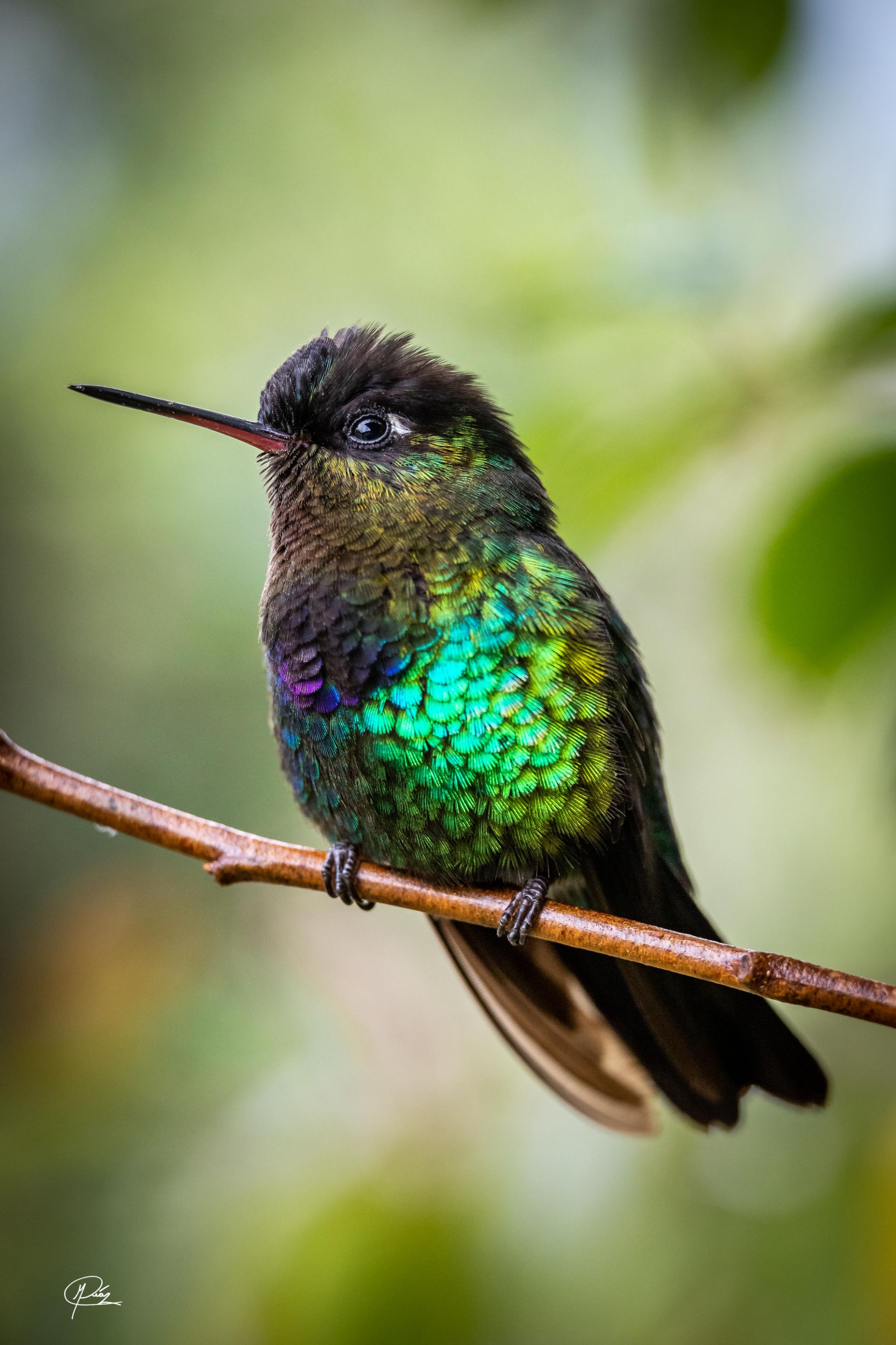
But now the big question, if we have bird-like compounds in our body, why don't we have a variety of colors like hummingbirds? Well, the answer is simple, and it is at this point that physics comes into play. Nature works like a Lego game, you can build many different things with the same pieces, and that is the case with color.
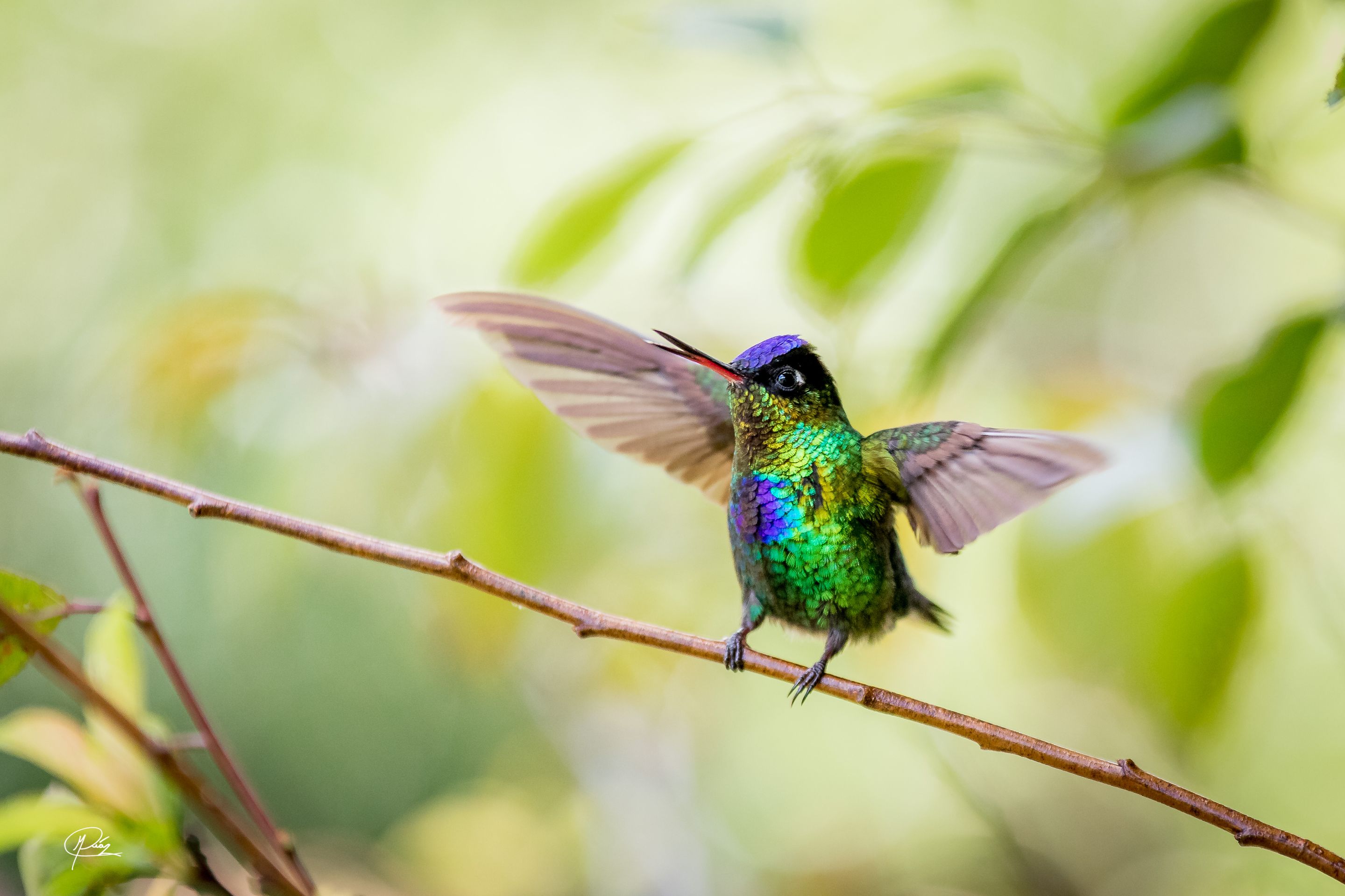
In our skin, melanin is found in a disorderly way, which makes it difficult for light rays to rebound and break down into their different colors. In birds, both keratin and pigments are organized in layers which enhance the rebound of light and its decomposition, something similar to what we see in soap bubbles.
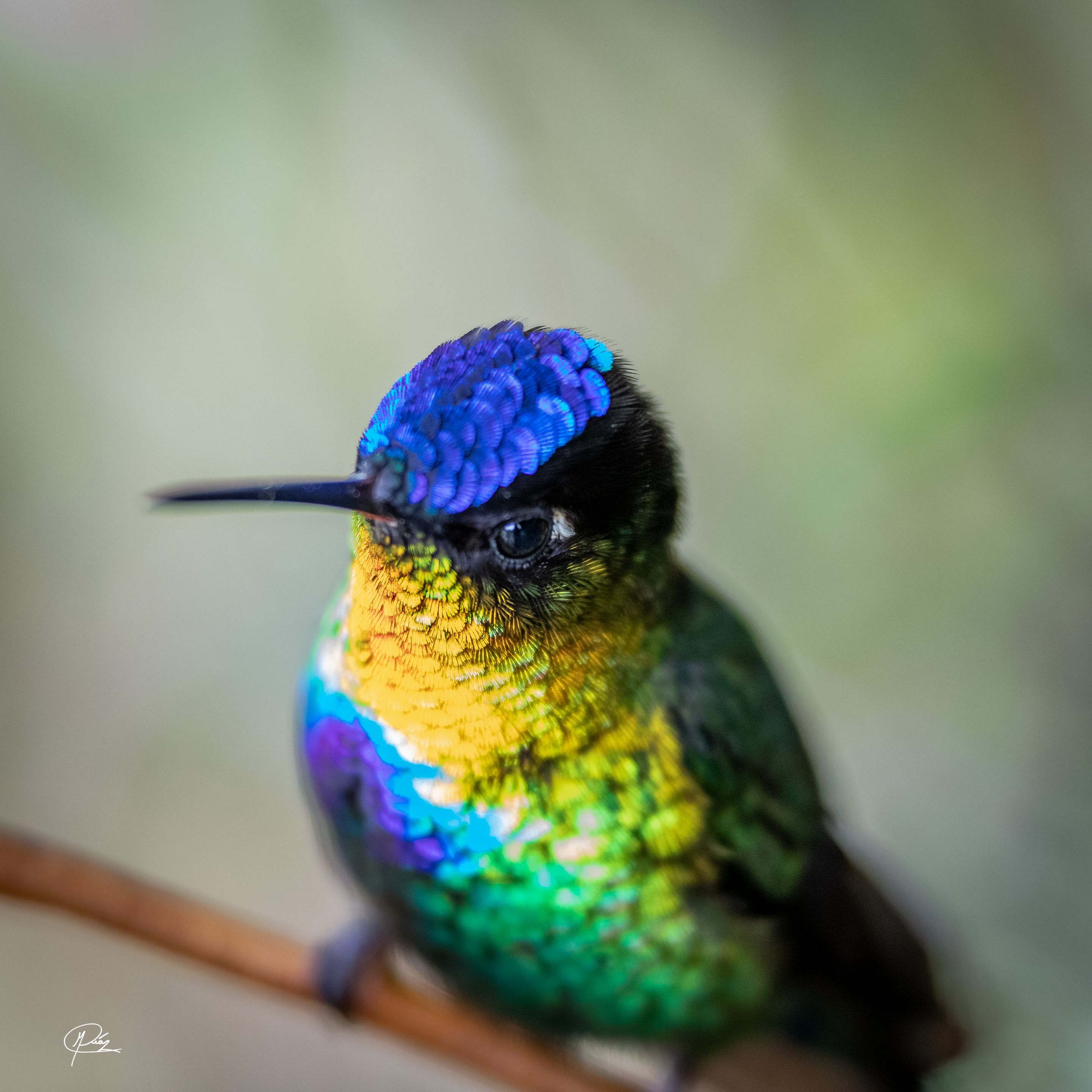
And the hummingbirds? As I mentioned before, hummingbirds are the masters of color, and their secret is due to the order and shape of their layers of keratin and pigments, which are lentil-shaped and full of small air bubbles. This forms a super complex structure that scatters the light in infinite tones, which depend on the angle at which the light falls.
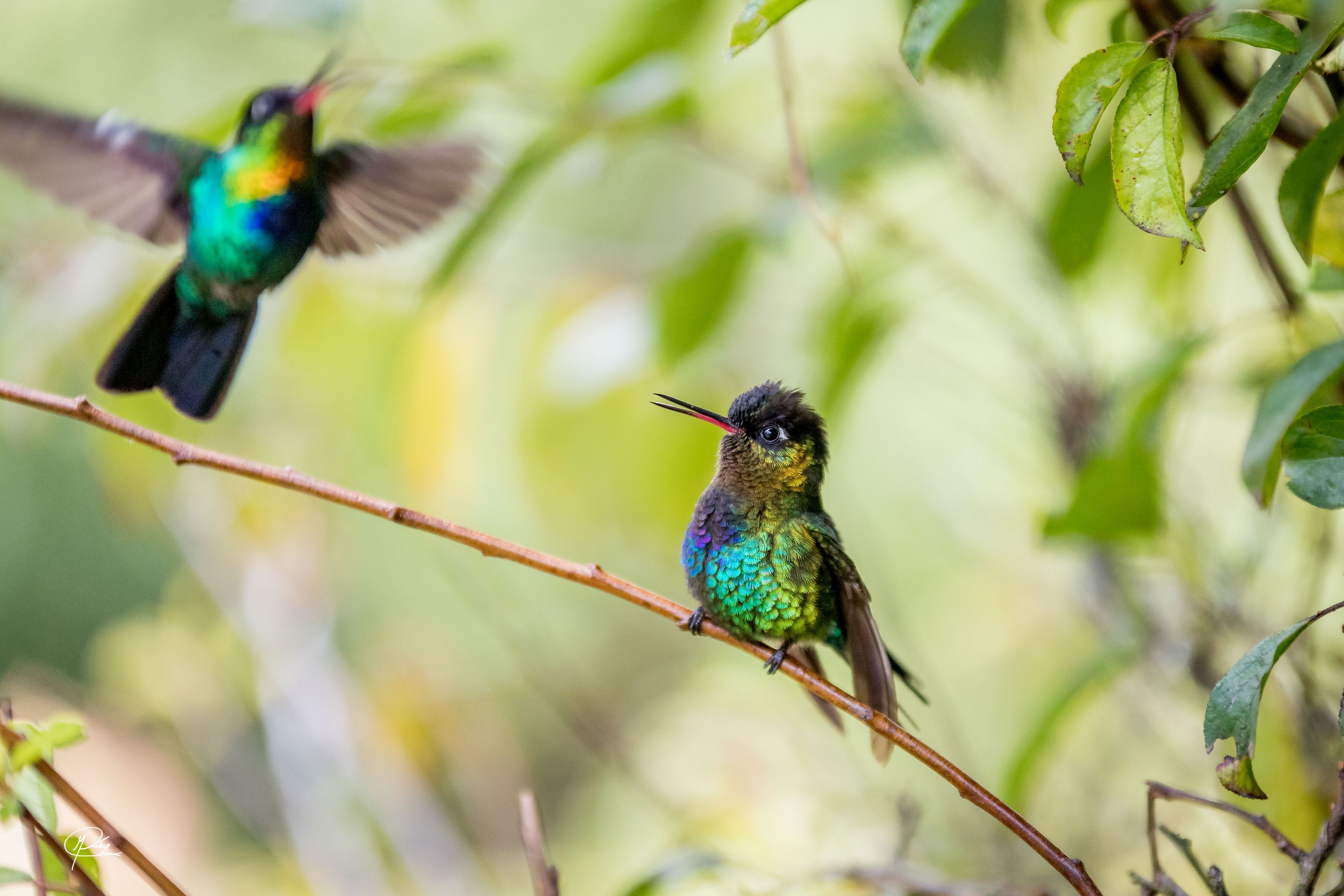
The irisdiscence of hummingbirds and some butterflies is such a fascinating and complex phenomenon that its study is allowing the development of our printing and security technologies for paper money, making them practically impossible to counterfeit.
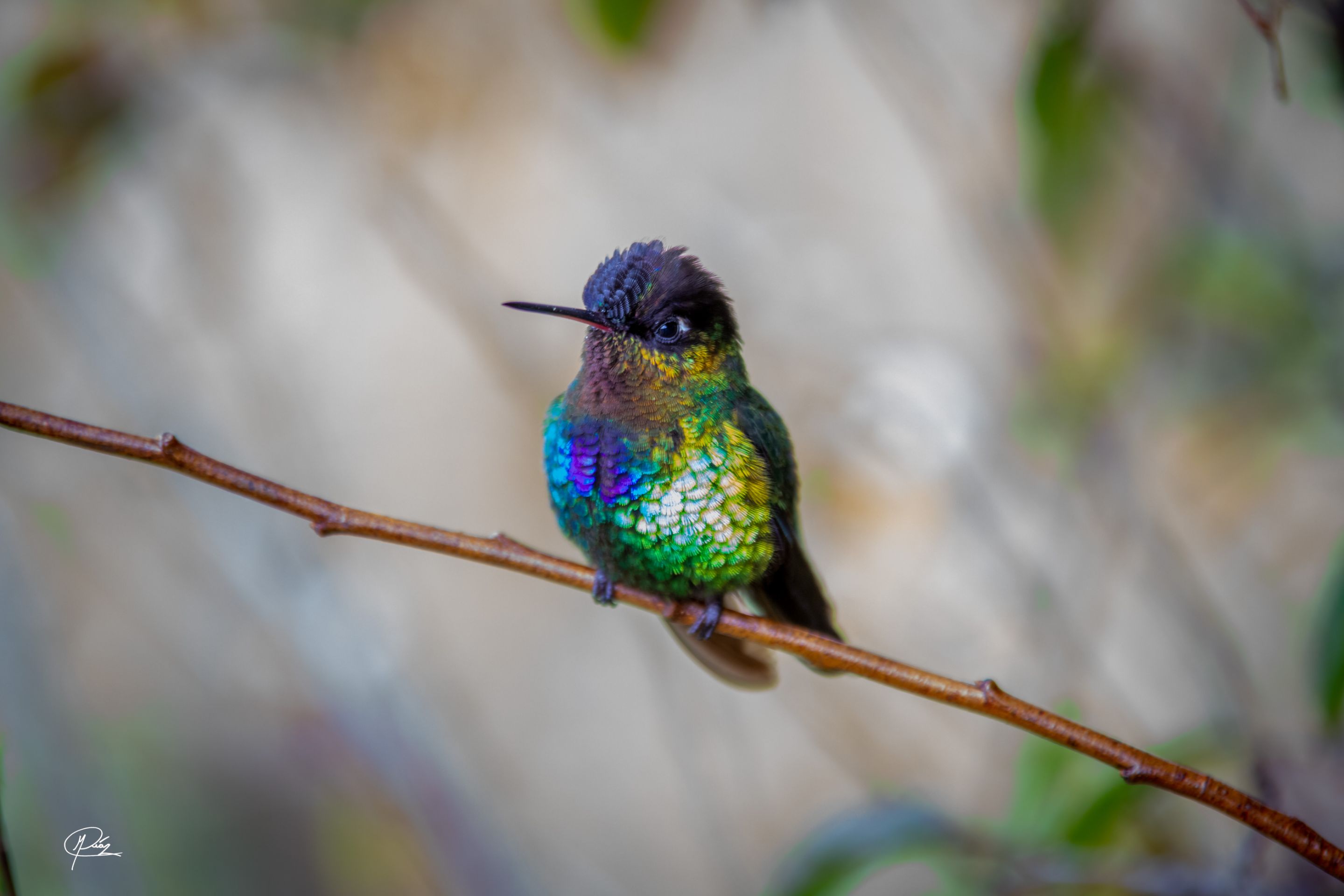
Versión en español
Las plumas de las aves contienen algunos de los colores más hermosos y diversos que se pueden observar en la naturaleza, sin embargo, hay un grupo que sobresale de entre todos por la complejidad de su colorido plumaje, los colibríes.
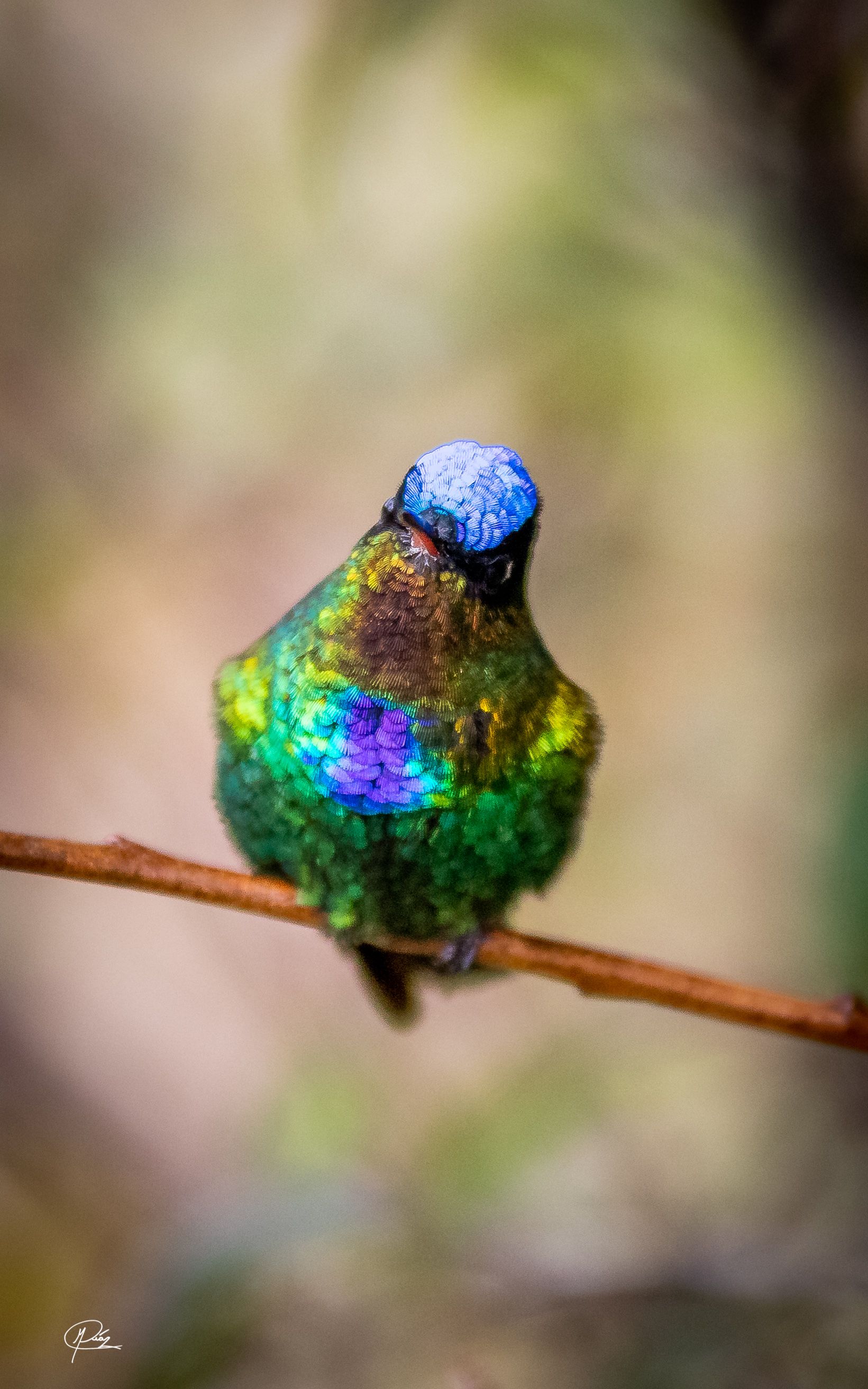
Pero cuál es el secreto que encierran sus plumas? Que los convierte en los maestros del color? la respuesta es una combinación de dos ciencias, la física y la química (específicamente la bioquímica)
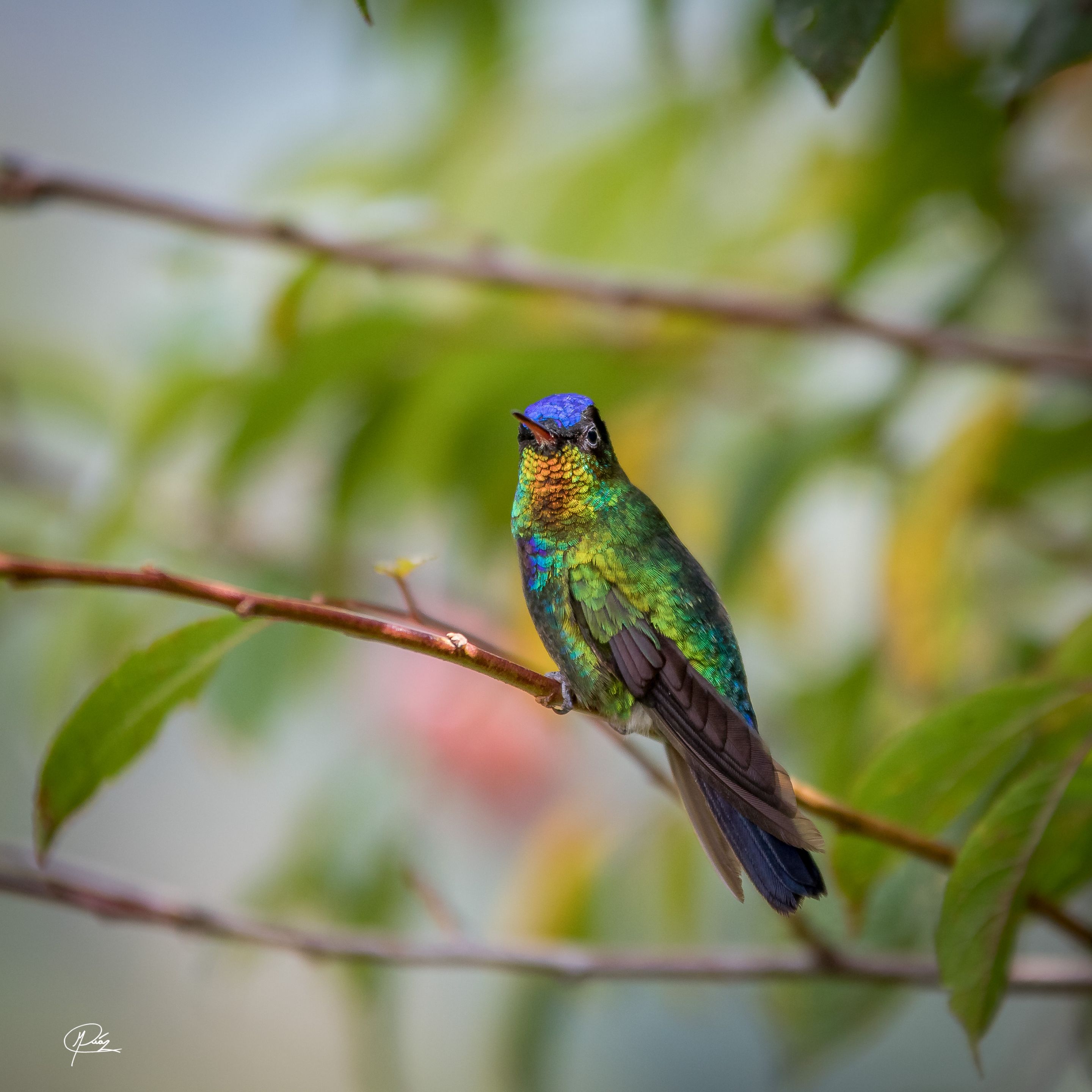
Las plumas de la aves están compuestas de queratina, la misma sustancia de la que están hechas nuestras uñas y el cabello. Dentro de la queratina se forman unas pequeñas estructuras llamadas bárbulas que están llenos de unas células llamadas melanosomas, las cuales producen pigmentos como la melanina, la cual es la responsable de el. color oscuro de nuestro cabello y de protegernos de la radiación del sol.

Pero ahora la gran pregunta, si tenemos en nuestro cuerpo compuestos similares a las aves, porque no tenemos una variedad de colores como los colibríes? Bueno, la respuesta es sencilla, y es en este punto donde entra a jugar la física. La naturaleza trabaja como un juego de Lego, puedes armas muchas cosas diferentes con las mismas piezas, y ese el caso del color.
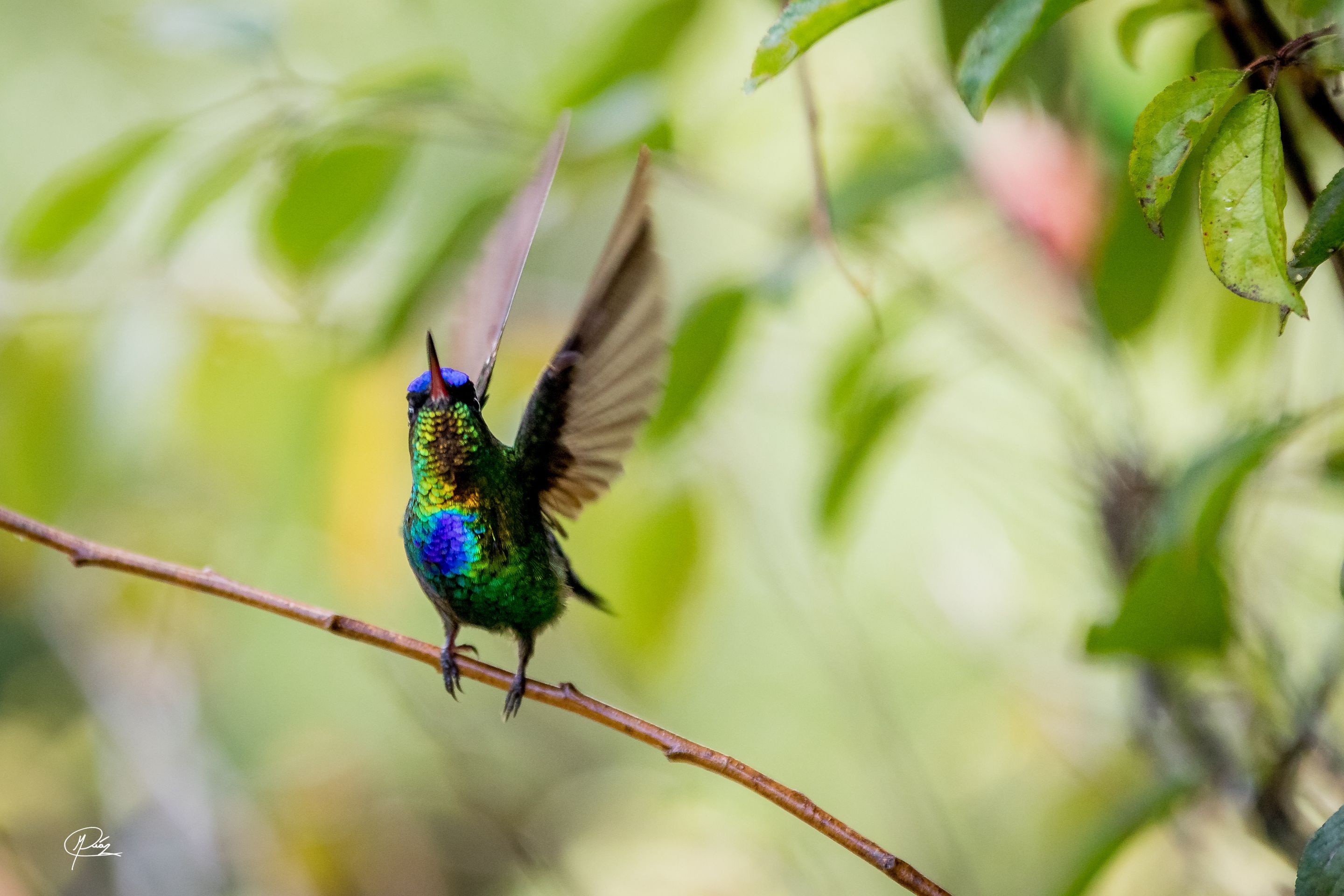
En nuestra piel, la melanina se encuentra de manera desordenada lo cual dificulta el rebote y la descomposición de los rayos de luz en sus diferentes colores. En las aves, tanto la queratina como los pigmentos se organizan en capas los cual potencia el rebote de la luz y su descomposición, algo similar a lo que vemos en las burbujas de jabón.
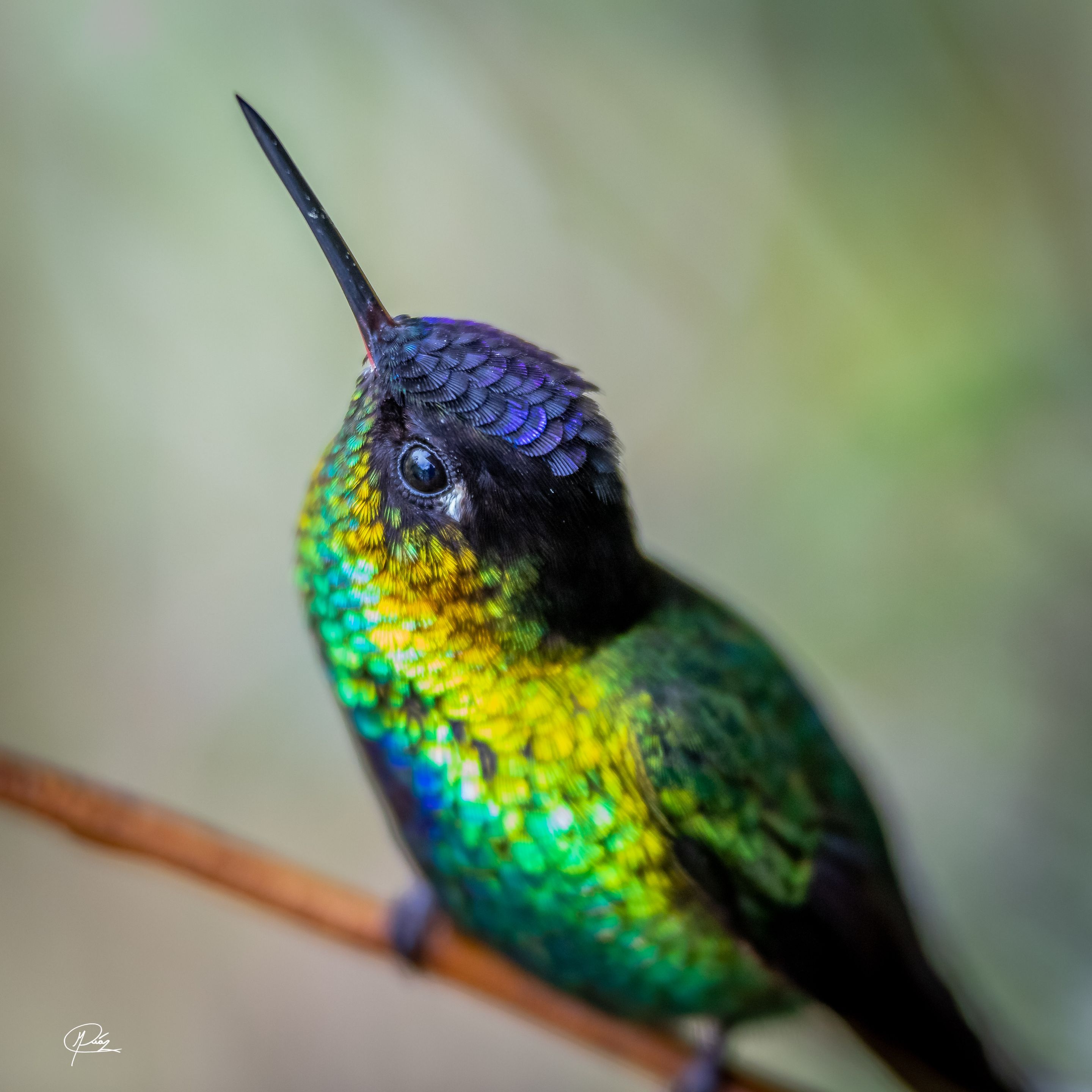
Y los colibríes? como ya lo había mencionado antes, los colibríes son los maestros del color, y su secreto se debe al orden y a la forma de sus capas de queratina y pigmentos, las cuales tienen forma de lenteja y están llenas de pequeñas burbujas de aires. Esto forma una estructura super compleja que dispersa la luz en infinidad de tonos, los cuales dependen del ángulo en que incide la luz.

La irisdiscencia de los colibríes y de algunas mariposas es un fenómeno tan fascinante y complejo que su estudio esta permitiendo el desarrollo de nuestras tecnologías de impresión y seguridad para el papel moneda, haciéndolos prácticamente imposibles de falsificar.
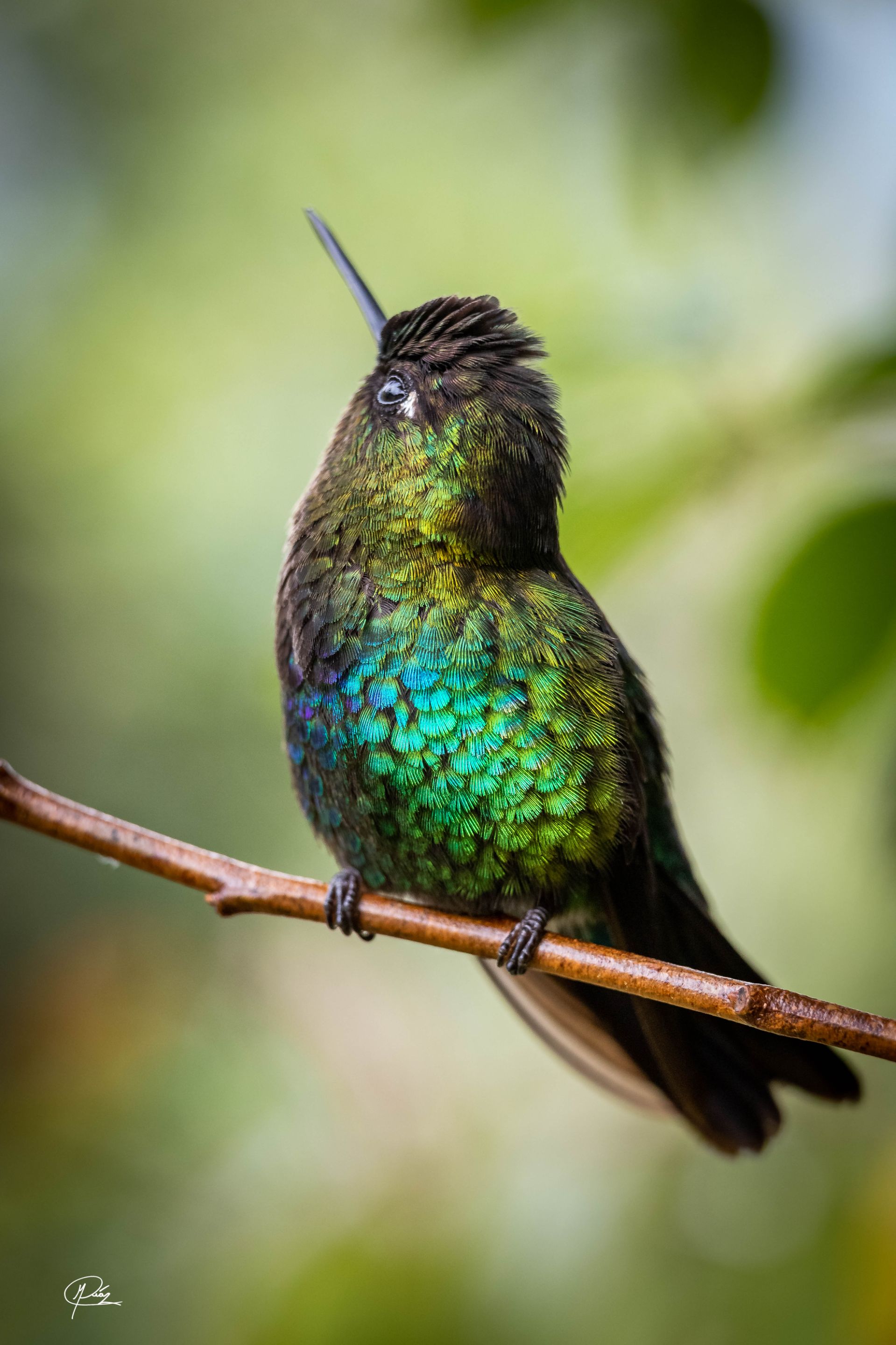
Visit my gallery in OpenSea where you can acquire my photographs NFTs of unique editions.

Visit my gallery in OpenSea where you can acquire my photographs NFTs of unique editions.